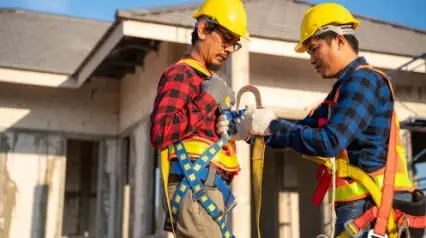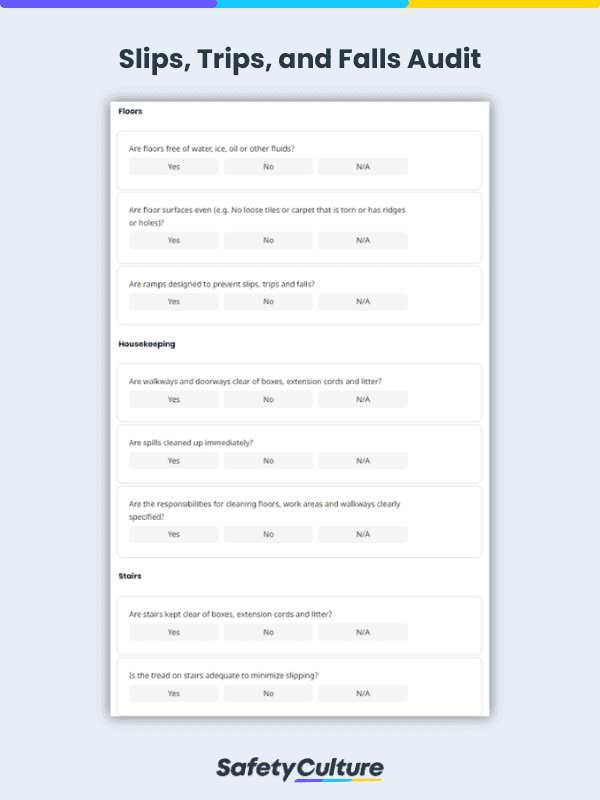What is Slips, Trips, and Falls Training?
Slips, trips, and falls training refers to a safety program designed to inform individuals about the hazards associated with this type of incident. Implementing effective slips, trips, and falls safety training is crucial to creating a safe and secure work environment, as accidents resulting from these cases are among the leading causes of workplace injuries.
Importance
Slips, trips, and falls are common workplace accidents that can lead to injuries and financial losses for businesses. Most commonly, this training aims to protect lives and comply with safety regulations such as the Occupational Safety and Health Administration (OSHA). Proper safety training helps organizations identify and prevent hazards, which protects both of its employees and helps them carry out smooth operations.
Preparing for Slips, Trips, and Falls Training
An important aspect of slips, trips, and falls training is to prepare a training program that best suits your processes. Your two main objectives in preparing for this training are :
- Assessment – Conducting regular risk assessments can help in pinpointing high-risk areas and devising strategies to mitigate them. Utilize proper checklists such as OSHA Toolbox Talk about Preventing Slips, Trips, and Falls to avoid missing any important details.
- Education – Comprehensive and engaging training programs tailored to the workforce’s needs are essential. Incorporating real-life scenarios and interactive activities improves understanding and retention.
To ensure that slips, trips, and falls training are impactful, it’s essential to also assess its effectiveness regularly. Collecting feedback from employees, analyzing accident data after conducting the training can help in evaluating the program’s success and identifying areas for improvement.
How to Conduct Slips, Trips, and Falls Training
Once preparations are finished, the training itself should mostly cover these important areas:
Performing Proper Cleaning and Maintenance Procedures
One of the primary steps in preventing slips, trips, and falls is ensuring that the work environment is clean and well-maintained. Regular inspections of floors and walkways are essential to identify potential hazards. Proper cleaning techniques for different surfaces, such as using appropriate cleaning agents, should be demonstrated during the training.
Use this slips, trips, and falls audit checklist during this procedure as a guide on to where to start and avoid missing anything.
Applying Signage and Warnings
Clear and visible signages play a vital role in preventing accidents. Employees should be trained in recognizing and understanding various warning signs. Proper placement of signage in hazardous areas will help reduce the risk of accidents significantly.
Reporting Hazards
Encouraging a culture of reporting hazards is crucial for maintaining a safe workplace. Employees need to feel comfortable with conducting inspections and reporting potential risks without fear of reprisals. The training should provide guidance on how and to whom to report hazards, ensuring that the necessary actions are taken promptly.
Taking the Next Steps
When a hazard is reported, it’s essential to take immediate actions to prevent accidents, as follows:
- Notify the right personnel – Report the hazard to the designated personnel responsible for safety, such as supervisors, managers, or safety officers.
- Provide detailed information – When reporting, be as specific as possible about the hazard’s location, nature, and contributing factors.
If the hazard poses an immediate risk, appropriate measures will be taken to address it promptly. This might involve cordoning off the area, fixing the hazard, or providing temporary warnings. Involving management and safety teams in assessing and addressing the reported hazards will reinforce the commitment to safety.





